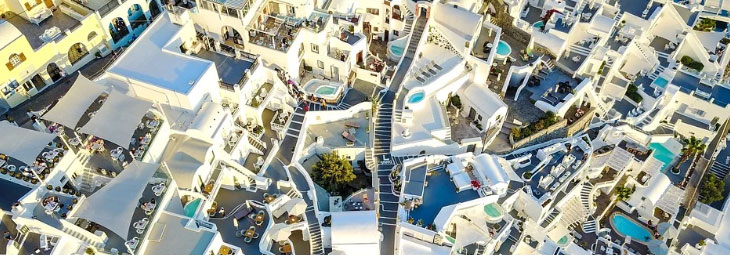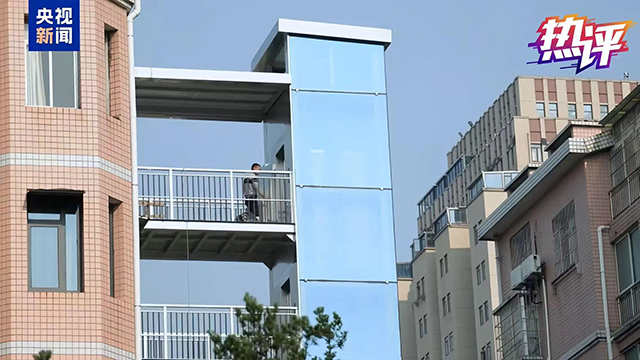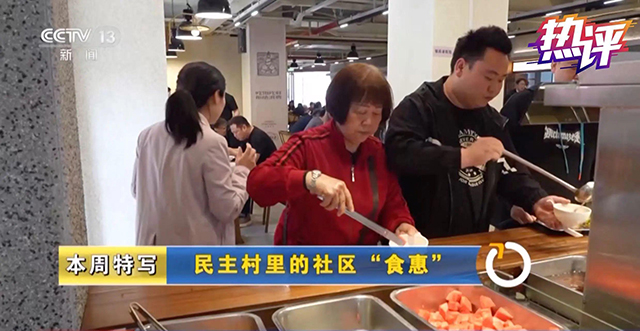


Cracks in the walls, poor layouts, frequent leaks…Building No. 8 at Huapichang in Beijing, originally constructed in the 1970s, was once a typical example of an aging, cramped, and deteriorating residential block. Today, after optimized design and on-site reconstruction, not only has the indoor space expanded-turning two-bedroom units into three-but the public areas now feature elevators and age-friendly facilities. Residents are full of praise: "Every unit has bright kitchens and bathrooms, great sunlight, and excellent ventilation. We’re truly happy-our sense of happiness is overflowing."

May 26, 2025, Beijing, China - Installation of Elevators in Aging Residential Communities. (CNR News / Sun Shiqiao)
The recently released Guidelines on Advancing Urban Regeneration clearly propose a systematic promotion of the "Four Goods": good housing, good communities, good neighborhoods, and good cities. This top-level planning comes at a crucial juncture as China enters a new stage of urbanization. As a result, pressing needs and concerns of the people-such as aging housing and outdated underground infrastructure-have become key focuses of urban renewal. Today, urban regeneration has become a necessary path for resolving public concerns and enhancing the quality of cities.
"Every time I came home, I had to circle around several times just to find a parking spot. Even my children found it hard to visit," wrote Mr. Zhang, a resident of an old neighborhood in Qingdao, Shandong, on a public survey. In response, the city completed 122 new parking lots last year. In Chongqing’s renovated Minzhu Village, a community canteen now offers 23 dishes for just 18 yuan, solving the meal difficulties faced by elderly residents in historic factory family housing zones. In Pingxiang, Jiangxi, the city added 30 public green spaces and 11 pocket parks over the year, turning residents’ wishes to “see greenery out the window and walk into a park from home” into an everyday reality.
Cities thrive when people gather; people settle where cities prosper. As of the end of 2024, China’s urbanization rate reached 67%, with 940 million people living in cities-surpassing the 65% target set in the 14th Five-Year Plan ahead of schedule. Today, China's urban development has shifted from expansion to optimization. People's demands have evolved from “Do we have it?” to “Is it good?” Therefore, urban development must prioritize livability and allocate the best resources for the people.
From “old, dilapidated, and small” to “Happy Neighborhoods,” between 2019 and 2024, China launched renovation projects in 280,000 aging residential communities, benefiting 48 million households-over 120 million people. The projects added 3.87 million parking spaces and built 78,000 community service facilities such as elder care and childcare centers. Every step illustrates the human-centered nature of cities, and the core of urban renewal lies in serving the people-listening to their needs, respecting their choices, and sharing the results.

May 26, 2025, Beijing, China - Feature of the Week Affordable Meals in Minzhu Village's Community Canteen. (CNR News / Sun Shiqiao)
The Guidelines on Advancing Urban Regeneration provide a roadmap for building livable, resilient, and smart cities. Its eight major tasks reflect a people-first and pragmatic approach, aiming for significant progress by 2030. This fuels greater public anticipation for secure and decent housing. Enhancing citizens’ sense of gain, happiness, and security through improvements in city functions, quality, and industries is the best response to the principle that “nothing is trivial when it concerns the people.” It is also a powerful strategy for driving investment and consumption, boosting economic growth, and further safeguarding and improving people’s livelihoods.
Source from : Shiqiao Sun, CNR News, May. 26th, 2025, https://news.cnr.cn/native/gd/20250525/t20250525_527185075.shtml
Translated By Jingyuan Zhang